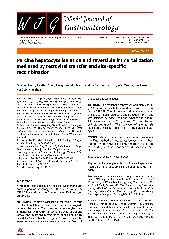摘要
AIM: To develop a hepatocyte cell line, we immortalized primary porcine hepatocytes with a retroviral vector SSR#69 containing the Simian Virus 40 T antigen (SV40Tag). @@@ METHODS: We first established a method of porcine hepatocyte isolation with a modified four-step retrograde perfusion technique. Then the porcine hepatocytes were immortalized with retroviral vector SSR#69 expressing SV40T and hygromycin-resistance genes flanked by paired loxP recombination targets. SV40T cDNA in the expanded cells was subsequently excised by Cre/LoxP site-specific recombination. @@@ RESULTS: The resultant hepatocytes with high viability (97%) were successfully immortalized with retroviral vector SSR#69. One of the immortalized clones showed the typical morphological appearance, TJPH-1, and was selected by clone rings and expanded in culture. After excision of the SV40T gene with Cre-recombinase, cells stopped growing. The population of reverted cells exhibited the characteristics of differentiated hepatocytes. @@@ CONCLUSION: In conclusion, we herein describe a modified method of hepatocyte isolation and subsequently established a porcine hepatocyte cell line mediated by retroviral transfer and site-specific recombination.
- 出版日期2010-4-7
- 单位华中科技大学
